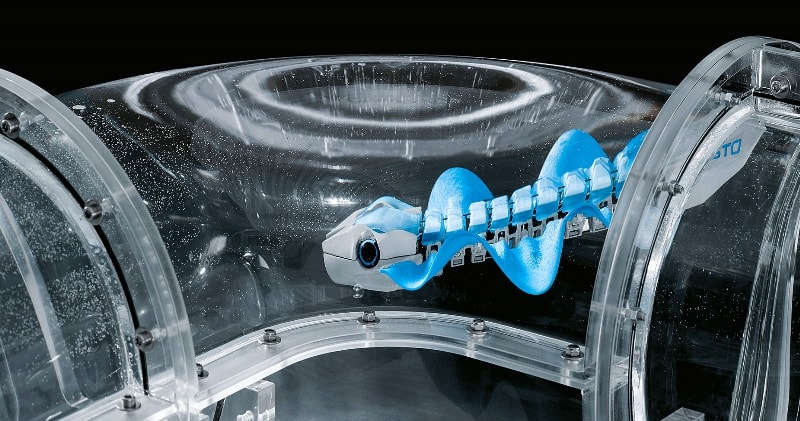The marine planarian, cuttlefish and Nile perch have one thing in common: in order to propel themselves, they use their fins to generate a continuous wave, which advances along their entire length. With this so-called undulating fin movement, the BionicFinWave also manoeuvres through a pipe system made of acrylic glass. At the same time the autonomous robot is able to communicate with the outside world wirelessly and transmit data.
source/image: festo
The fins on the natural role models run from head to tail and are located either on the back, the stomach or on both sides of the body. The wave-shaped movement of the fins allows the fish to push the water behind them, thereby creating a forward thrust.
The BionicFinWave uses its two side fins to move along. They are completely cast from silicone and do without struts or other support elements. This makes them extremely flexible and thus able to implement the fluid wave movements of their biological role models true to nature.
Advertisement
For this purpose, the two fins on the left and right are each fastened to nine small lever arms. These in turn are driven by two servo motors located in the body of the underwater robot. Two attached crankshafts transfer the force to the levers in such a way that the two fins can move individually.











